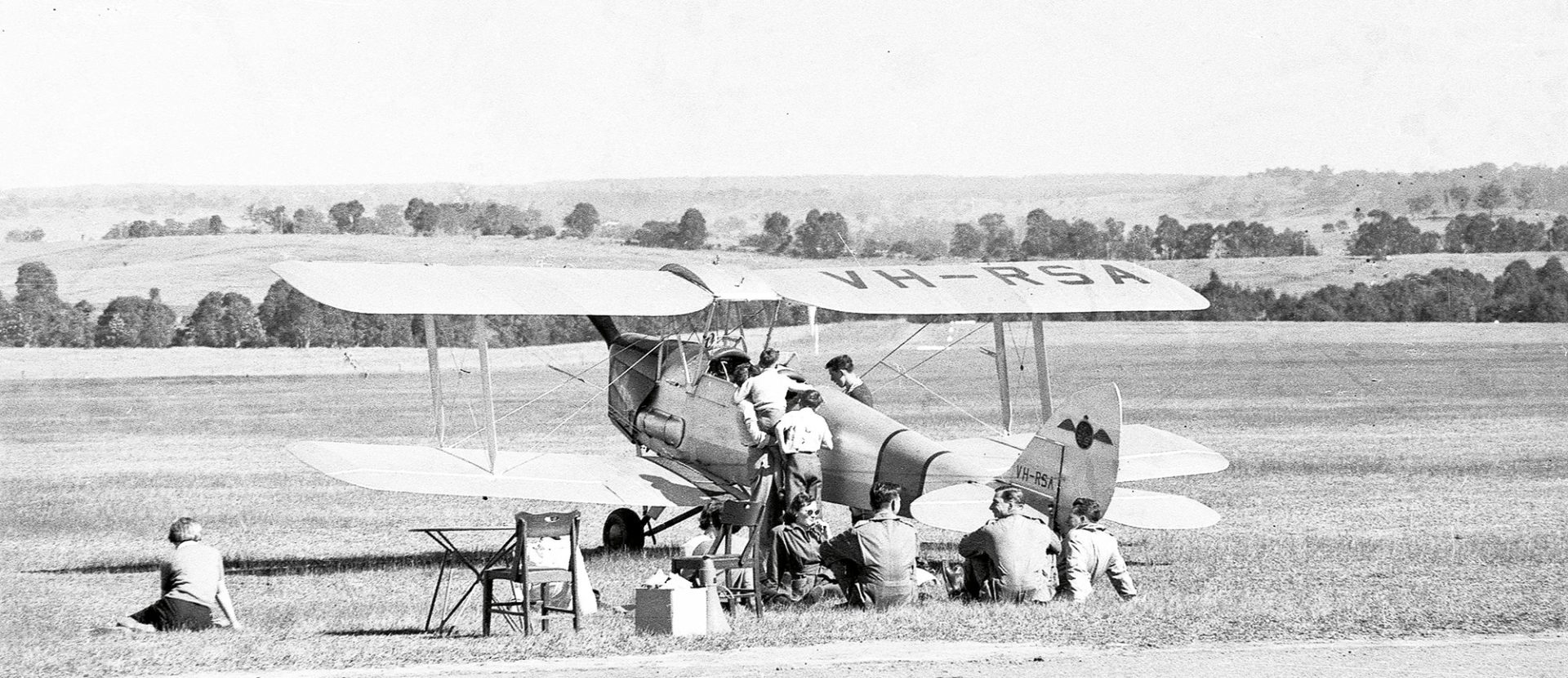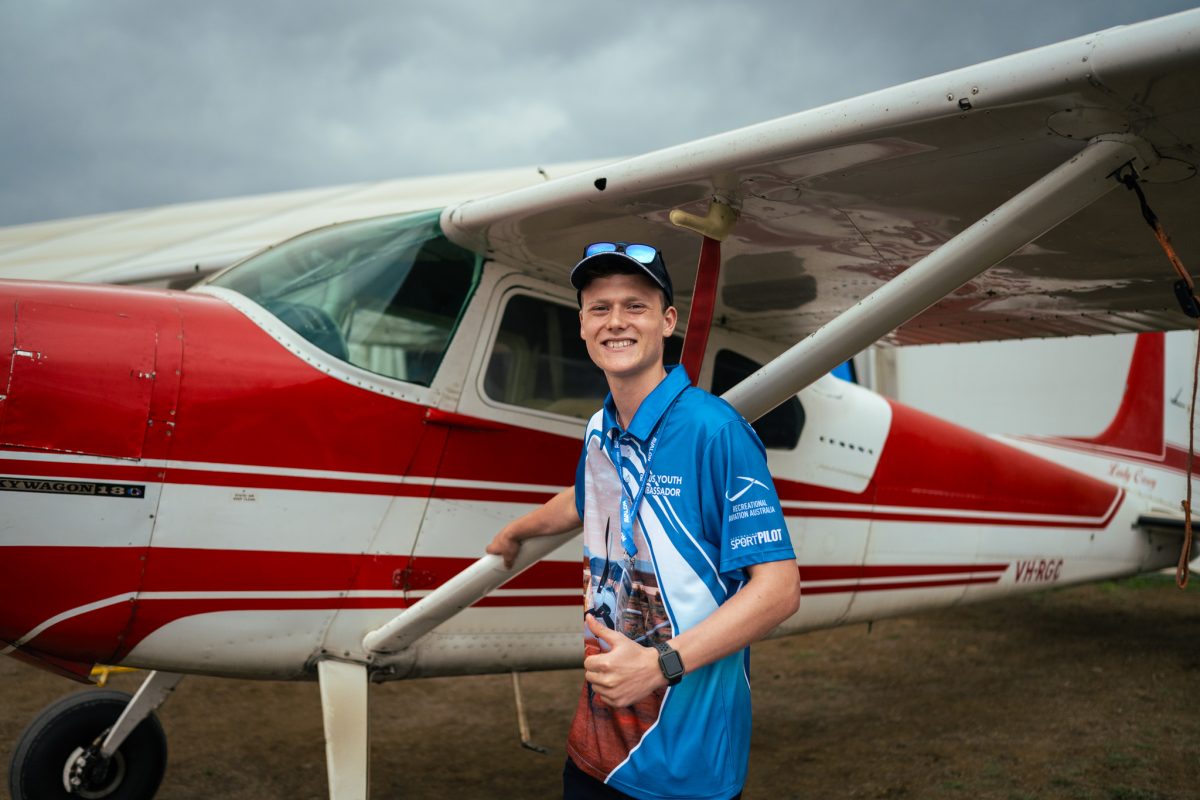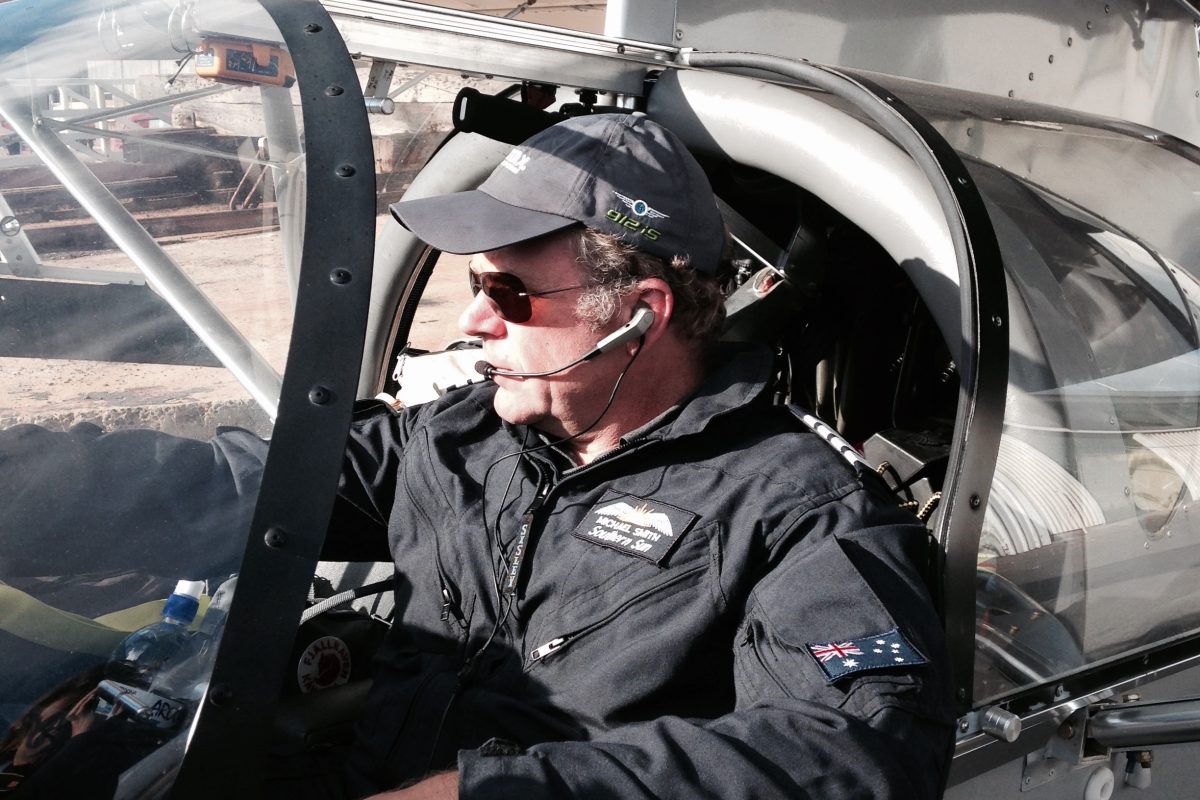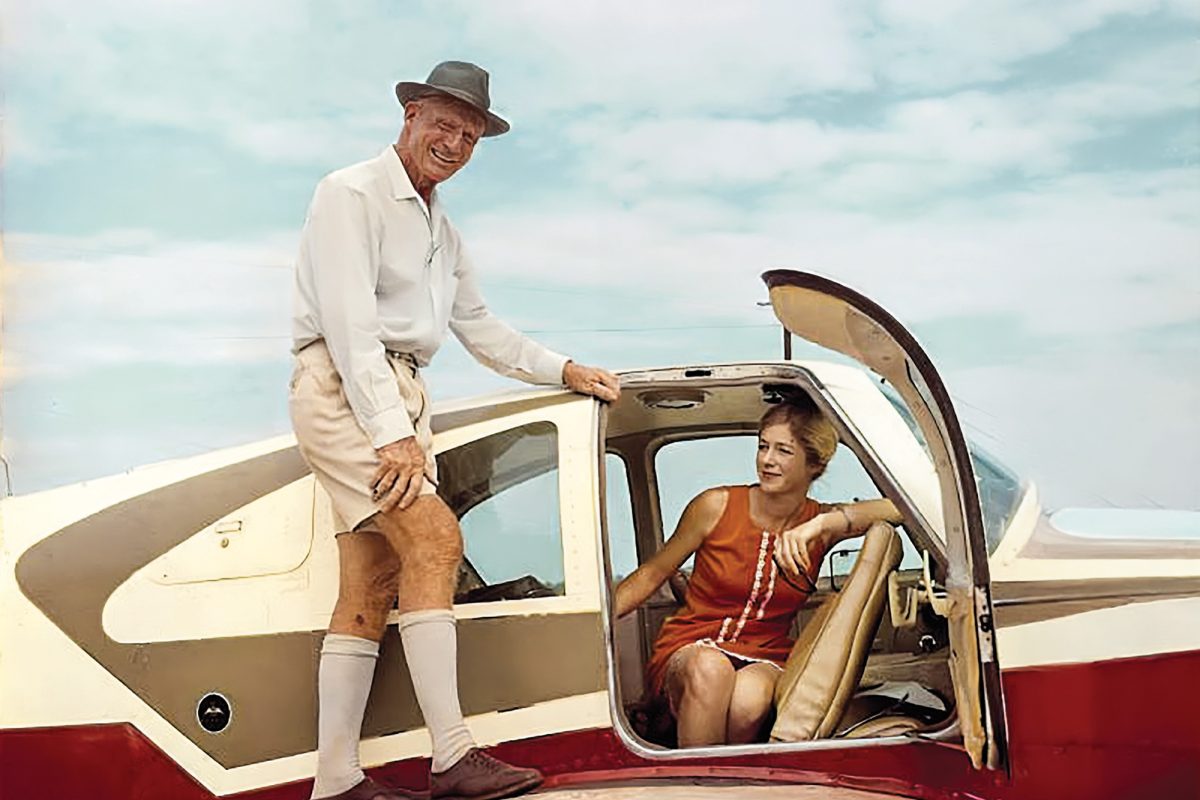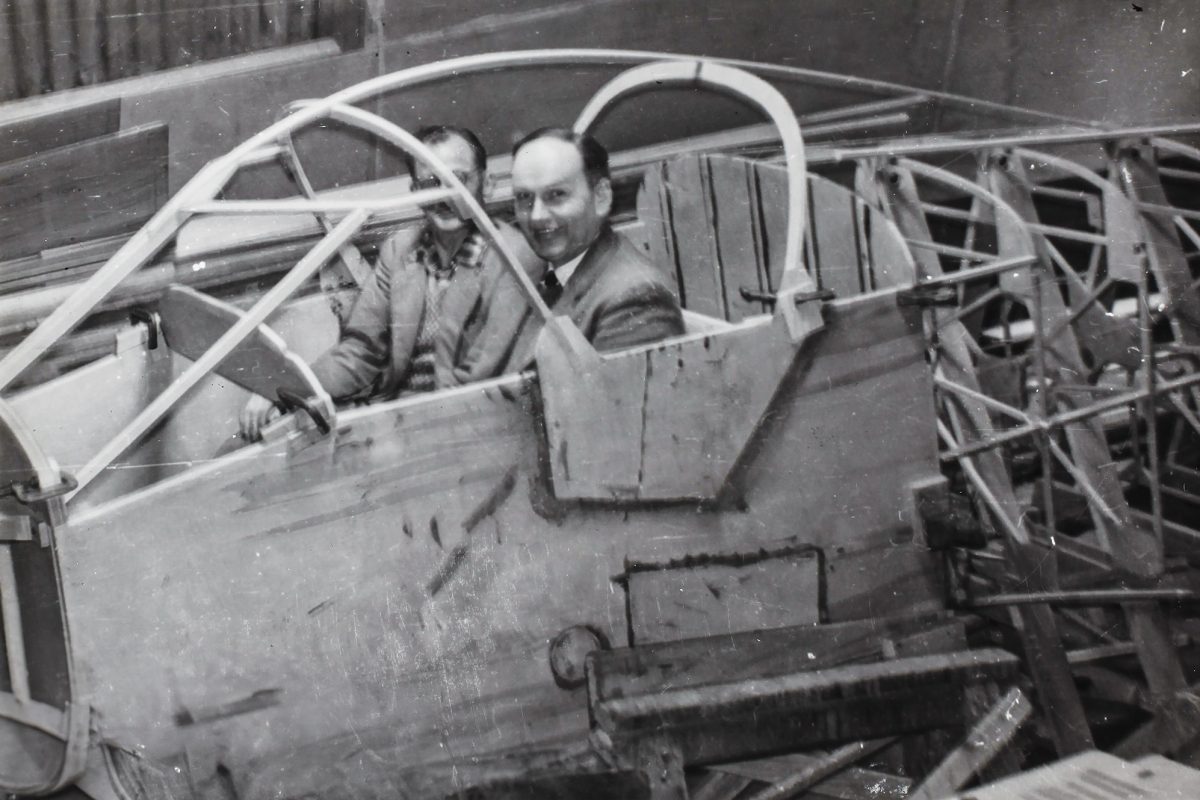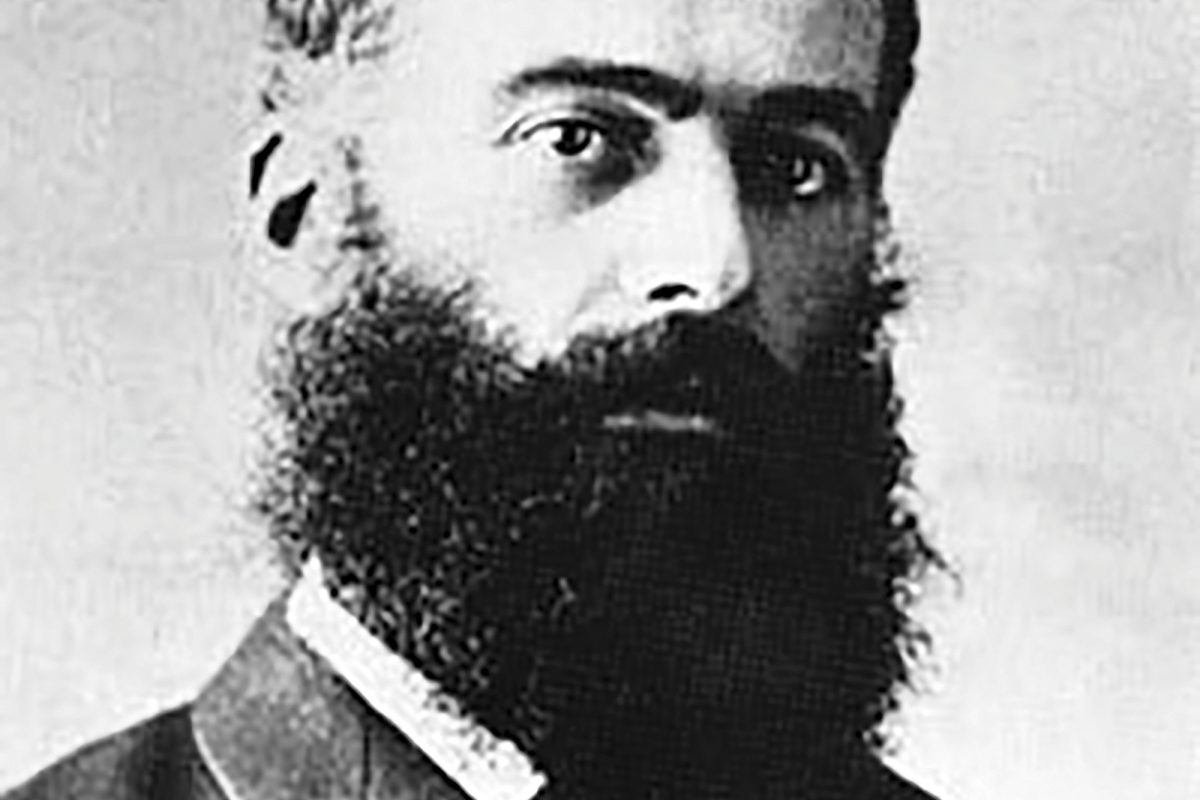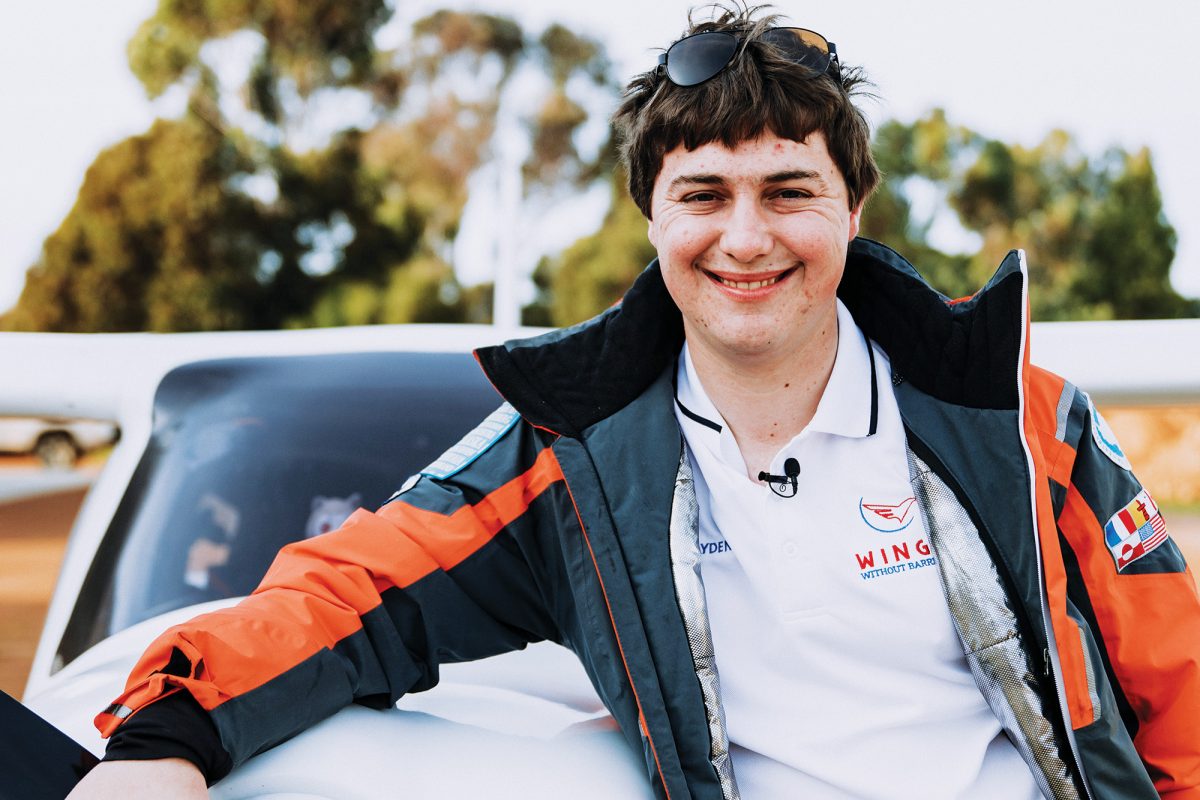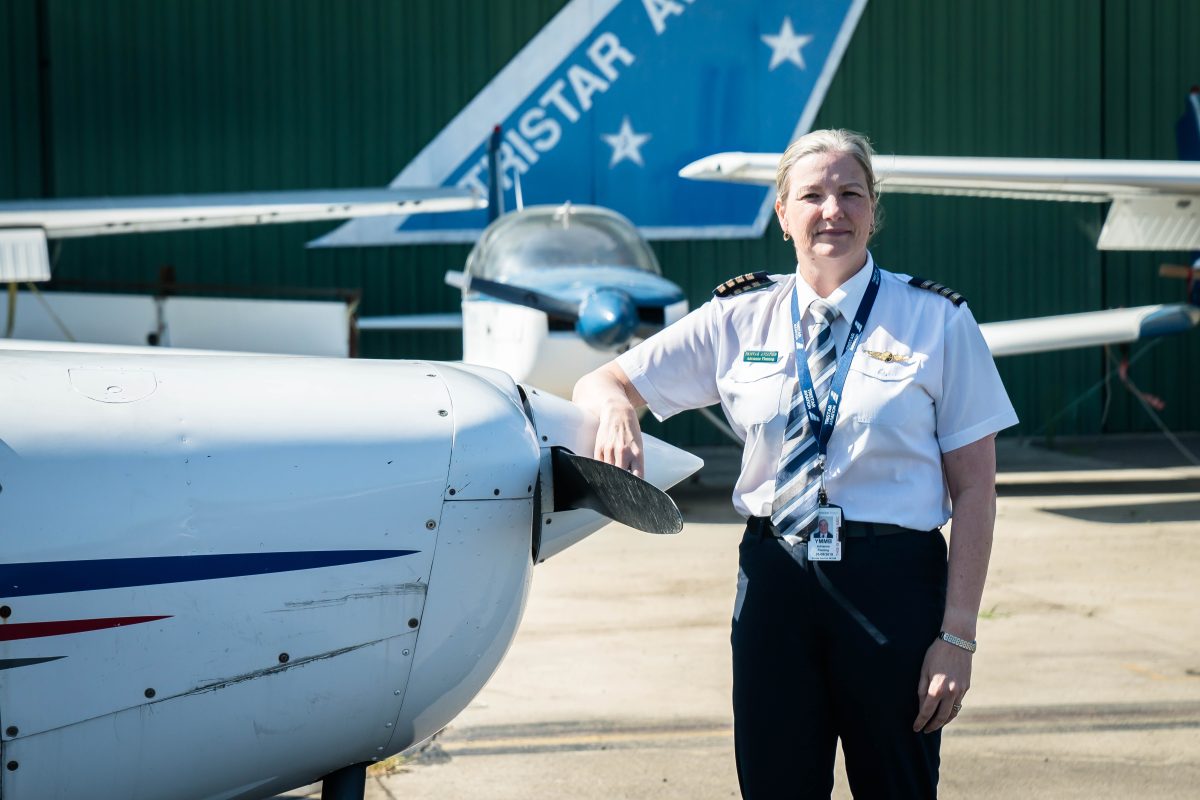RECOLLECTIONS FROM BARRY WRENFORD
I joined The Royal Aero Club of NSW (RAC) in 1955 when 19 yrs old, after starting a new job. My boss was just learning to fly at the Royal Aero Club of NSW, and his morning tea arrivals at work involved describing his adventures of the day in the Tiger Moths, which was enough to get me enthused. I was earning £12 per week, and the dual rates on the Tiger was £3.18.6 per hour and solo it was £2.18.6. Being winter, all the flying gear had to be purchased from ex-military disposal stores; the kapok filled Sidcot suit, fur lined flying boots, gloves, goggles and helmet fitted with the Gosport tube, for connecting to the instructor in the front seat ahead of me. Even fitted out with all this, some of the early morning winter flights were somewhat of an ordeal.
To state that the cockpit was windy is an understatement, and the exposed face felt as if knives were cutting into it until all became numb. The reprieve often came when one gained a thousand feet or so, when suddenly the air warmed up several degrees as one flew through the inversion. Taxiing the Tiger was an art. There was no way that you could see directly ahead because you were in the rear cockpit and the whole front of the aircraft was in the way. All taxiing involved weaving the aircraft and alternately looking out to the left and the right side. The steering was by a steerable flat tail skid, which had limited purchase on harder surfaces. In cross wind situations judicious bursts of power needed to be applied to blast the rudder surfaces just to get the aircraft pointing in the right direction.
Most instructors were old RAAF pilots, working out their frustrations on the Tigerschmitts as they called them, and some had strange ideas on how to blood their students. One of these was Nick Belloff, probably a European allied fighter pilot missing his Spitfire. My fourth instructional flight was with him for medium turns. Briefings were just that – brief.

Fitting the Sutton harness involved four straps for the lap and shoulder with just rows of holes along them. The idea was to join the holes up by placing a pin through suitable ones and locking it in place. Well, the first attempt seemed a bit tight, so I selected the next set of holes which was quite comfortably loose. Then up to 5,000ft, which in retrospect was a bit high just for medium turns, and with much shouted communications through the hard to hear Gosport tubes the task was achieved. Then Nick asked me if I was strapped in, which I affirmed and he said, “taking over”! He then dived the Tiger to pick up speed, pulled the nose above the horizon, then proceeded to roll the aircraft on to its back. When inverted, he pushed the stick forwards and I found myself falling out of the seat trying to hang on with fingernails to the cockpit sides and not succeeding. I then fell against the harness with them biting into my shoulders. I was suspended with my head well above the windscreen, being blasted by the direct slipstream with the aircraft in an inverted glide. The sensation of hanging partly outside the aircraft over 5000ft of nothingness, swinging in the cradle of the harness, with the seat cushion rocking on my backside, cannot be described. I had thought that I was a goner, and without a parachute.
When Nick had his bit of fun for the day, he rolled back upright. I fell back into the cockpit, and Nick said “handing over”, and then proceeded to berate me for my sloppy flying with my shaking hands, and probably laughing his head off.
Well, the lesson was learnt, and I never flew again with a loose harness! I said nothing to Nick afterwards, and surprising to me now, I continued flying for a lifetime of enjoyment in things with wings.
Students were taught all the mysteries of oiling, fuelling, dewatering the fuel tanks, checking the aircraft, and starting and swinging the prop. In those days you helped everyone else in these tasks, and when a visiting pilot and aircraft came, you all piled in and did the same for him. I remember one bushie coming in, probably an early taildragger Cessna, and after filling the tanks we drained off three bottles of water from them. I doubt that he had ever done a water check! On weekends you stayed for much of the day, and when not flying, the main entertainment was watching and criticising everyone else’s circuits and bounces. Mostly the bounces, which could be spectacular at times.
Starting the Tigers was a procedure of hand priming, blowing out the excess fuel by pulling the prop backwards with the throttle wide, setting the throttle for idle, and hand pulling the prop forwards to start. No starter motor or brakes. We had a nervous lady trainee pilot who forgot the last vital setting, and the engine started full throttle. The Tiger leaped its chocks, and our pilot froze in the cockpit. The prop swinger was alternately chased by the aircraft, then in turn had to chase it. He could only end up by grabbing the wingtip which caused it revolve and collide with the hangar door, where it stopped with the spinner drilling a hole on the corrugated iron until someone raced up and closed the throttle. Surprisingly, there was no damage to the aircraft!
Spin training. That sadistic Nick Belloff once again! “I have the stick, you have the rudders – keep the wings level with the rudders!” He slowed the Tiger to just above the stall and sneaked a little nudge of the stick to the right. So, I applied left rudder, and lo, it came level, but momentum carried it a bit past it, so I applied a touch of right rudder to correct it. However, the roll overshot again even more. So more opposite rudder, then heaps of rudder to correct this, and suddenly the Tiger flicked right on to its back, with me beneath, and continued to roll while becoming vertical. The ground became a disorientating rotating blur spinning insanely around the Tiger’s nose. “Opposite rudder, ease the stick forwards”, and suddenly the world around became sane again. That first spin is never forgotten!
Engine restarts in flight. No starter! One points the nose down vertically for an airstart, and then is told to push the nose over further until one is slightly inverted, hanging with the wings behind and just empty air below. 130kts and the prop jerks around a couple of times then blurs into life, and then one returns to level flight.
Low Flying. Down to the low flying paddock near Bringelly, flying below treetop level. Phil Coney demonstrating the apparent skidding in the turns. He went on enjoying this for a while, and then he said, “you can see how dangerous this is” and with exhilaration and adrenaline pumping, I replied with an enthusiastic “YEEEAAAAHH!”
The dual cross country was 3.5 hrs in the Auster RSM with Nick Belloff, my old nemesis. Then my solo cross country was in the luxury of the canopied Tiger RSH, where at least I didn’t have to anchor the maps and flight plan down to prevent it all blowing away. When the training was finally completed, one had the usual flight test with Bob Jarvis who was the DCA examiner in those days. This was passed OK, and then there was a verbal examination where 50 questions had to be answered correctly. Well, he kept asking questions, with me giving the occasional wrong answer, until I managed to get 50 of them right, and then I had my license!
The Tower. The controllers were the lord and masters of the aerodrome. Light signals were the method of communication. Green for take-off and landing, red for stop, go around or orbit if another aircraft was in front, or had not cleared the landing area. Flashing white was the dreaded call to report to the tower for a dressing down after some infringement. I remember one day in my early solo flights I elected to land on the short gravel strip that then ran beside, and in full view of the tower. I was fixated so hard on the landing that I failed to notice that there were aircraft parked near this strip. Well the miracle occurred, and I did a three-point greaser on the gravel. I was so proud of the achievement until the white light started flashing, and I got a dressing down for showing off and landing in close proximity to parked aircraft! With a steerable tailskid only, Tigers were a bit vague in directional control on the ground, and a groundloop could have been very expensive.
After nine years with the Royal Aero Club, a family to keep and a house to pay off, finances were a bit short for the increased costs of flying. I was longing to keep flying, so I thought to try out the gliding in those wood and fabric gliders being hauled up by cables from winches at Camden. However, as a power pilot I was welcomed with open arms as a much-needed voluntary tug pilot for their rather decrepit recently acquired underpowered Auster, and I ended up with the best of both flying worlds. I have retired from flying now, with the hard training and experience received through the Royal Aero Club and those dedicated ex-service Tigerschmitt instructors carrying me through a safe 63 years of flying, a hundred different aircraft types, and 14 years with Recreational Aviation Australia.
